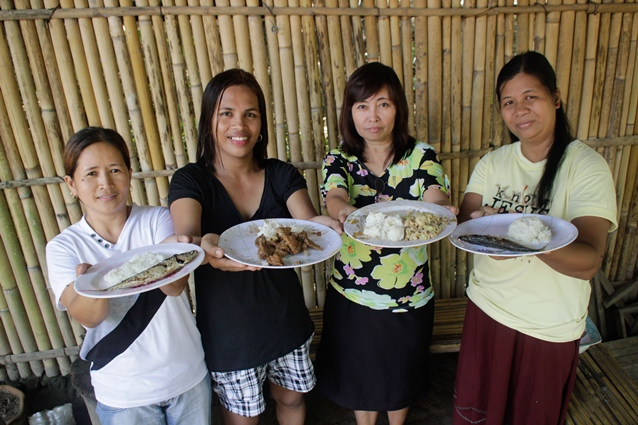 There is a peculiar reason why the Rose Kambingan Kainan in Sapang, Jaen, Nueva Ecija is a long-time favorite of its loyal customers. Aside from their delectable goat meat-based dishes, the humble restaurant is known for serving the best variety of rice – soft, white, and steamy.
There is a peculiar reason why the Rose Kambingan Kainan in Sapang, Jaen, Nueva Ecija is a long-time favorite of its loyal customers. Aside from their delectable goat meat-based dishes, the humble restaurant is known for serving the best variety of rice – soft, white, and steamy.
In a day, the restaurant cooks 25kg of rice from 7AM to 8PM. Cashier Epifania Ramos identifies NSIC Rc160 and Rc218 rices as their top choice.
“With these varieties, rice is soft, whiter, and yummy – the kind of rice that makes customers don’t stop until they get enough,” Ramos says.
Rice at home
The eating quality of rice is one of the factors of Filipinos’ preference for buying the staple food.
But for Josie Clemente, 41, of Pansinao, Candaba, Pampanga her preference has nothing to do with color, taste, or aroma; it largely depends on the availability of her financial resource. If there are organizations that provide rice as relief good, she would definitely accept and cook it for her family.
“If the rice donated to us is not as attractive as the other choices, at least in terms of color and scent, I add pandan leaves and wash it three times,” Josie says.
Given enough money, Josie buys rice at P34 per kilo. For her, expensive rice means better eating quality.
Marivic Manalastas, 34, also of Candaba, shares her technique in buying rice. First, she smells the lower part of the rice container to make sure its quality is consistent from top to bottom. According to her, there are rice retailers who mix aromatic rice with laon (long-stored rice). Her price limit is P42/kg.
Know the facts
In a study titled Changing Preferences of Filipinos for Eating Quality of Rice, PhilRice’s Dr. Bienvenido O. Juliano attested that consumers prefer cooked rice with softer texture.
“The per capita rice consumption (PCRC) of Filipinos is increasing, accompanied by a decrease in the amylose content of rice from high in the 1980s to intermediate and low,” Juliano explains.
Amylose determines the softness or hardness of cooked rice. Low amylose content corresponds to softer texture.
Based on National Nutrition Surveys, PCRC continued to increase from 103kg in 1993 to 119kg in 2010. Juliano reported that since 1980, most of the released varieties from the National Seed Industry Council (NSIC) have lower amylose. Then popular IR64 had 83% consumer acceptability while today’s NSIC Rc160 and Rc170 have 94%. This is evident with the demand of consumers for softer cooked rice.
But eating the best quality comes with a price and a warning. Excessive eating of white rice with low amylose content such as Sinandomeng and Rc160 may cause the incidence of type 2 diabetes. The disease is aggravated by rice that has low amylose resulting in higher glycemic index (GI). GI is responsible for the increase of blood glucose in our body.
Alma Mesa, 37, also from Candaba, was diagnosed with close to type 2 diabetes. Her doctor advised her to eat the healthier brown rice instead of white.
The alternative
Brown rice is the unpolished version of white rice. Any rice variety can be milled into brown rice. It also has lower glycemic index than milled rice with low amylose content.
“If only rice consumers know and acknowledge the benefits of eating brown rice instead of white, the demand for brown rice would grow and its price would shrink,” Mesa hopes. She buys brown rice at P54 per kilo.
Obviously, brown rice and white rice differ in taste and texture. Brown has an almost nutty flavor and chewy texture; white has softer and more delicate texture.
Brown rice has carved an increasing popularity and solid fan base among Pinoy health enthusiasts wanting to curb their carbohydrate intake and eat nutritious food. If the trend persists, who knows, our preferences for eating quality rice might change. By then, Pinoys will choose rice not only for its aroma and texture but also for its built-in nutritional benefits.




